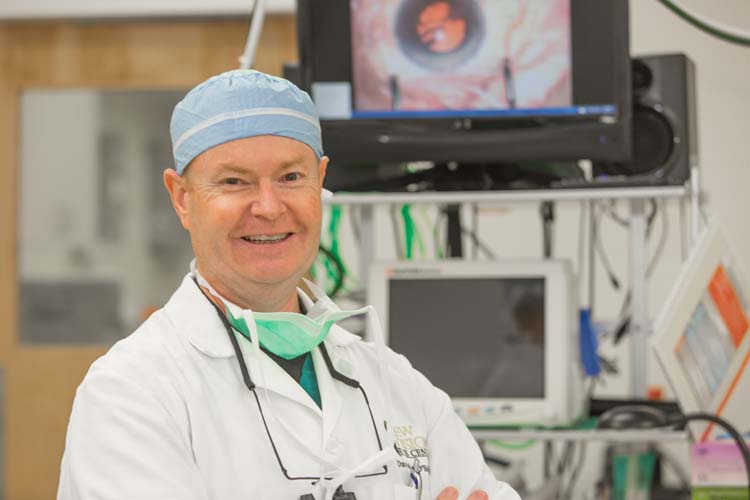
The expression “there wasn’t a dry eye in the house” definitely did not originate in this part of Florida.
In fact, it might be difficult to find many household hereabouts in which someone isn’t suffering to some degree from dry eye disease or dry eye syndrome.
The National Library of Medicine says “dry eyes are one of the most frequently encountered [eye] problems worldwide,” and the condition affects millions of Americans.
The condition is so common – and relief so actively sought – that pharmaceutical giant Allergan Pic generated nearly $1.5 billion in revenue from its Restasis dry eye medication last year alone.
The risk of developing dry eye increases with age and, generally speaking, women have a higher incidence of dry eye than men.
Dr. David O’Brien, an ophthalmologist at New Vision Eye Center in Vero Beach who is fellowship-trained in what he calls “diseases of the external part of the eye,” is an expert in the treatment of dry eye, in part because he has the condition himself. “I have dry eye and I treat it really aggressively doing everything I ask patients to do,” O’Brien says.
Perhaps surprisingly, the basic physiology of dry eye is relatively simple.
According to the National Eye Institute, “in a healthy eye, lubricating tears called basal tears continuously bathe the cornea – the clear, dome-shaped outer surface of the eye.
“With every blink of the eye, basal tears flow across the cornea, nourishing its cells and providing a layer of liquid protection from the environment. When the glands near each eye fail to produce enough basal tears, or when the composition of the tears changes, the health of the eye and vision are compromised.”
That, the Eye Institute continues, can lead to the symptoms commonly associated with dry eye, including an unpleasant scratchy sensation or the feeling that something is in the eye, stinging or burning sensations, episodes of excessive tearing following periods of dryness, pain and redness in the eye, and blurred vision.
But that pretty much wraps up the “simple” part. After all, the fluid most of us know simply as “tears” is actually a complex mixture of more than 1,500 different proteins along with fatty oils, water and mucus that help keep the surface of the eye functioning properly.
The other surprise here might just be the list of things that can trigger dry eye symptoms.
The affable and approachable O’Brien first points to medications such as antihistamines and antidepressants as well as certain bladder control medicines which, he says, “can make your eyes very dry.”
“There’s something blooming all year round here in Florida,” O’Brien explains, “and so people take antihistamines all the time to stop their stuffy noses but they’re [also] drying their eyes out as well.”
Medications used in hormone replacement therapy, Parkinson’s disease and high blood pressure can have the same effect.
Beyond that, O’Brien continues, propeller-like dry eye-agitators hang in nearly every Florida bedroom.
“Ceiling fans are a real culprit here,” says O’Brien, “and they definitely can exacerbate the problem. If you simply run [your] AC, you’ll cool the room and the ceiling fan won’t dry the eyes out” as you sleep.
Computers can also compound the problem.
People tend not to blink while watching their computer monitors and that keeps the eyes from being bathed in helpful, remedial tears.
“Dry eyes,” O’Brien explains, “are multi-factorial, meaning you’ve got to take a [patient’s] history and then untangle it a little bit and take the time to figure it out. If you listen, 90 percent of the time, the patient will tell you what’s wrong with them.”
And while O’Brien is quick to sing the praises of many over-the-counter eye products and supplements – such as flax seed oil – he also points out that self-medicating without having an eye exam first can pose problems.
People who have red eyes, for example, may run out and buy an over-the-counter product that claims it will “get the red out.” But O’Brien cautions, “Those very commonly irritate your eyes further and make eyes even more dry because they constrict blood vessels, which decreases tear production … if anyone is ever in a pinch, a preservative-free artificial tear won’t hurt you” and may provide at least some temporary relief.
“I think,” says the man who has successfully battled dry eyes himself, “the overall take-away is dry eyes are extremely common, extremely under-diagnosed and yet very treatable” with professional advice.
Dr. David J. O’Brien is with New Vision Eye Center at 1055 37th Place in Vero Beach. The phone number is 772-257-8700.



